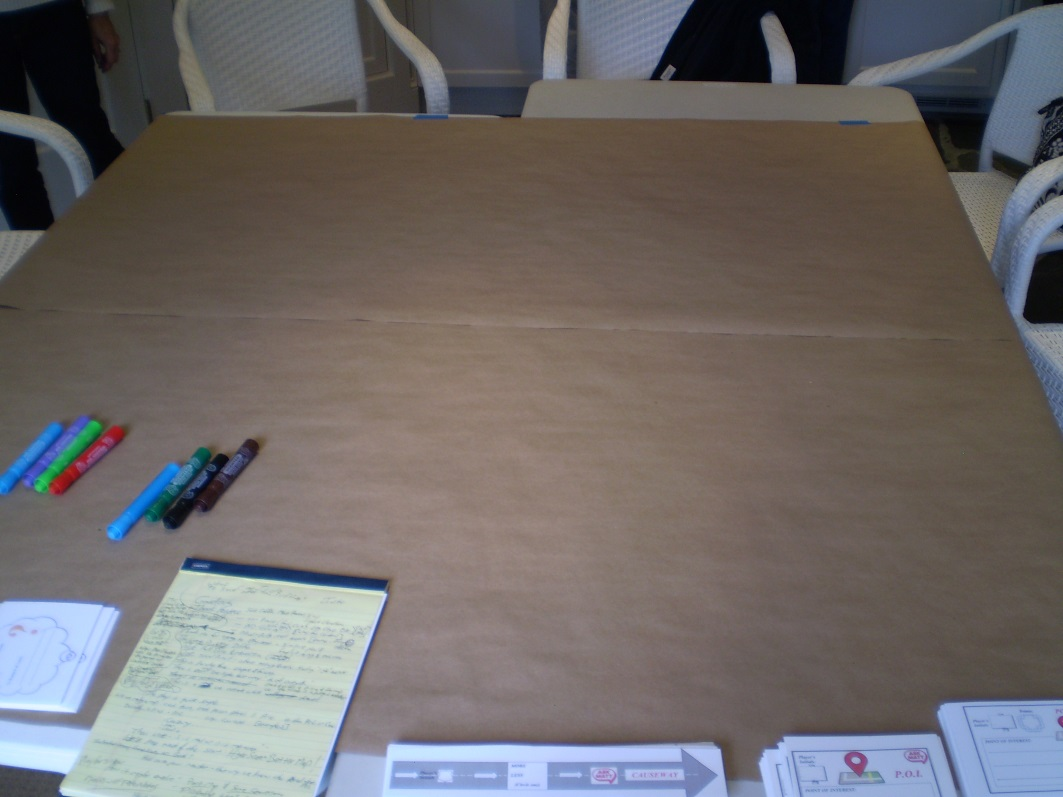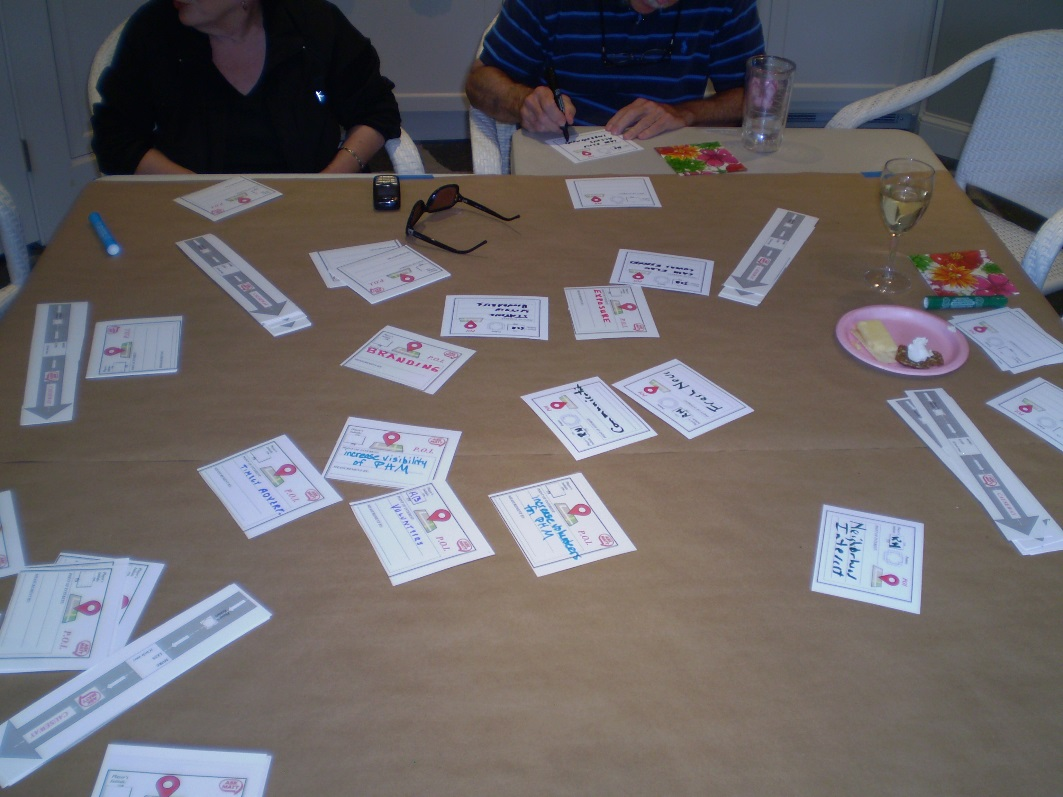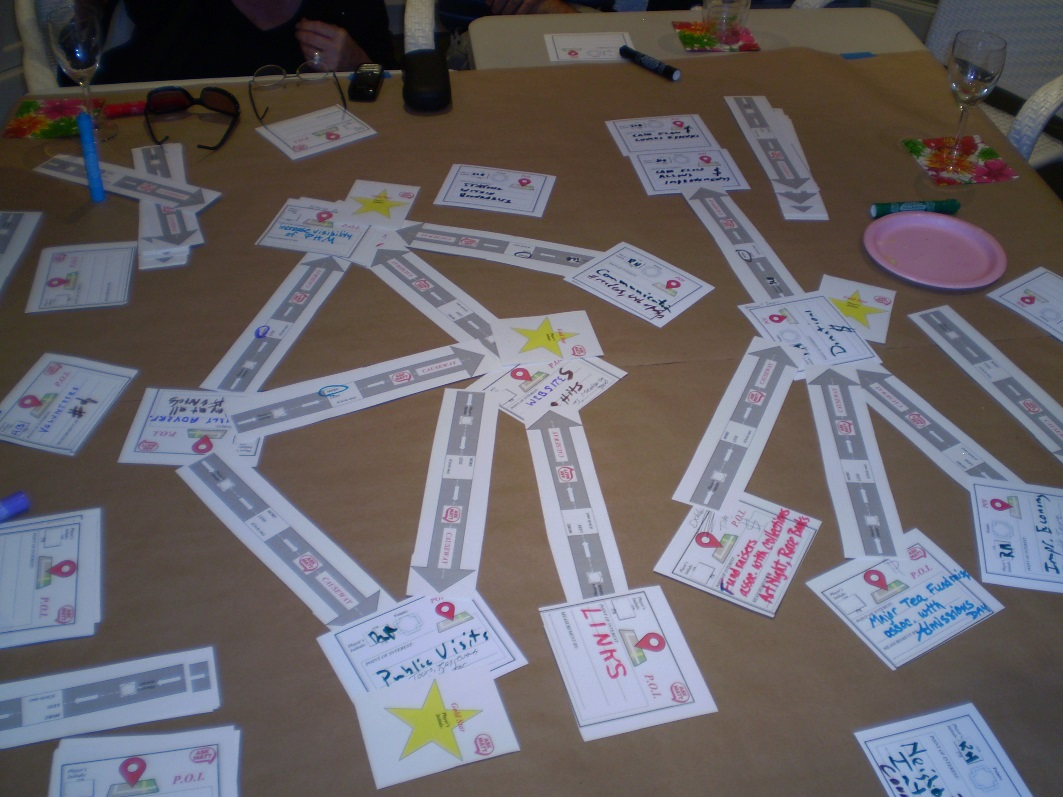Chapter 9: Strategic Knowledge Mapping—
The Co-Creation of Useful Knowledge
Best Paper award: Innovations and future directions in education track.
Wallis, S. E., & Wright, B. (2015, March 4-6). Strategic Knowledge Mapping: The Co-creation of Useful Knowledge. Paper presented at the Association for Business Simulation and Experiential Learning (ABSEL) 42nd annual conference, Las Vegas, CA.
Abstract
Strategic planning typically involves conducting research and setting objectives. It is a difficult and expensive process with no guarantee of success. Recent research shows that managers with more “structured” knowledge will be more successful. Using Integrative Propositional Analysis (IPA) we can objectively determine the potential usefulness of a Strategic Knowledge Map (SKM). Creating an effective SKM is a precursor to more easily creating a more effective strategic plan. The present game is focused on players co-creating an SKM. Their play is scored in such a way that they will receive more points for creating a more structured map. The resulting map may be easily used in the “real world” to support dialog, decision making, and the creation of specific objectives for strategic plans.
The game is unorthodox. It is not a simulation where play begins with a pre-set “world.” Similarly, the game is not educational in the traditional sense where players attempt to acquire or test knowledge using an existing database. Instead, ASK MATT is a model-building game where knowledge is co-created within the game by the players. Further, the game goes beyond finding “insights”; instead, the results of the game may be directly applied as a guide to real world situations.
In the present paper, we explore the background, difficulties, and opportunities for improving strategic planning and policy planning using strategic knowledge mapping from a systemic perspective. We explain the play of the game, its scoring, anticipated outcomes, our experiences playtesting the game with small groups, plans for playtesting with larger groups, and opportunities for developing a version of the game that may be played online and/or as an APP.
Introduction
In this paper, we present ASK MATT, a rather unusual game with an odd history. The game began with research on the “theory of theory” or “metatheory.” For our purposes, a theory is generally understood to be a set of interconnected concepts; metaphorically, it is a lens to understand and engage the world. In short, a theory may be understood as useful knowledge. A metatheory is a theory specifically directed to understanding how theory is created, structured, or used. Studies of metatheory, published in the academic literature, showed how we might better understand what we understand. In essence, the research shows how we may evaluate theories based on the internal structure of their logical propositions. That structure will show the potential usefulness of the theory—before testing the theory in practice or application as enacted knowledge. From those rather opaque investigations, it was recognized that there must be a simpler way to go about developing our understanding. After many attempts at simplification in the academic literature, popular literature, and conversations with a wide variety of people, one thing became clear. A better way to engage minds could be found by playing games.
In the present paper, we begin by presenting a brief background from the academic literature. Essentially showing a heterodox method for evaluating our “conceptual systems” (e.g., theories, policies, strategic plans). A key part of that presentation will be strategic planning and “Strategic Knowledge Mapping.” This is important because if an organization is to be successful, it is crucial for that organization to have a reliable map. Yet, until recently, our ability to evaluate those maps has been severely limited. The present paper shows how maps may be evaluated.
Next, we present how the process of map creation and evaluation was gamified. That is followed by a description of game play, and then by our experiences with alpha testing the game. The paper concludes by discussing a few of the many potential directions for developing the game—and a call for your suggestions to help us move effectively forward in bringing this game to a place where it can be used to support more successful strategic knowledge mapping, strategic planning, and greater success for individuals and organizations.
The Necessity and Difficulty of Strategic Planning
Strategic planning is typically understood as clarifying strategic goals. And, importantly, this can be a problem if one does not have a good understanding of the organization and the business environment. To set goals without a map is foolhardy. What traveler standing on point A would say “we should go directly to point B” without knowing the intervening terrain? The leader may be unknowingly pointing toward a precipice!
Managers want and need useful insights (Czarniawska, 2001). Yet, our academic world seems unable to provide them with useful theories (Weick, 2003).
Strategic planning is a very important process for corporations because it helps to support organizational success through the efficient allocation of resources. Such an approach should provide a systemic view of the firm’s resources and situation. Such an approach also supports managerial learning (for existing managers and new managers alike) to increase the leadership team’s ability to make effective strategic decisions (Lorange, 1978). However, wrong decision may destroy a career. So the process is also scary. That fear leads managers to use relatively simple interpretations and traditional strategies (Martin, 2014).
It has been argued that top managers should spend up to 10% of their time engaging in strategic planning activities (Bryson, 2011). This is a considerable investment of time for questionable returns. While strategic planning is undoubtedly important and promotes organizational success, it is also argued that the results may be irrelevant, dysfunctional, and lead to excessive rigidity (Miller & Cardinal, 1994). Some studies have found strategic planning process such as SWOT analysis to be ineffective (Hill & Westbrook, 1997).
Importance of SKM (Strategic Knowledge Map)
The knowledge map is a close cousin of causal maps, strategy maps, concept maps, and cognitive maps. For the present paper, we will refer to these generally as “maps” or strategic knowledge maps (SKMs). A good map is one that is useful and effective for making organizational decisions, for improving organizational cohesion, communication, encouraging the development of new knowledge, and boosting economic returns (Wexler, 2001). As Wexler (2001) explains, a knowledge map is a useful tool for overcoming data smog or information overload. Maps are also used to make sense of existing knowledge and to identify where exploration might lead to new and useful knowledge—an important “strategic asset” (Zack, 2000) especially for entrepreneurs (Casson, 2005).
However, in the same way that we have poor theories of business and poor approaches to strategic planning, our ability to develop useful theories and practices of knowledge management is also in question. In a recent survey of 12 theories of organizational learning, Wallis (2009a) found that the concepts of organizational learning theory were not well understood, suggesting that the process of organizational learning is not well understood. This is a problematic situation if the success of a firm is tied to its people’s development and use of knowledge because the process of cognition is also a resource to the firm (Alvarez & Busenitz, 2001).
Despite (or because of) its importance, “Knowledge mapping is a daunting task” (Wexler, 2001: 262). So much so that it may seem more efficient to have specialists who are engaged in the creation of maps. However, this creates a gap between those who make the maps and those who use them. In this age of transient knowledge, it is crucial that the map-makers be the same people who are the map users. Therefore, the task of mapping must be made accessible, something that any manager may learn and use. This gap between the importance of having maps and the difficulty of making maps prompted the present authors to develop a new approach. One that would leave open the content of the map to the greatest degree possible while maintaining a rigorous approach to how the presented knowledge should be structured.
But how do we know if a map is good when, for every firm, there is a need for unique knowledge? The lessons of one firm cannot be applied in whole to another. The map used by a CEO leading a Fortune 500 firm through an economic boom is unlikely to be useful to a mom-and-pop operation trying to find their way through a recession. Or, metaphorically, a map of Disneyland won’t help me navigate through the Sahara desert. In short, we need new insights to create better SKMs.
Difficulty of Systems Thinking
Systems thinking (ST) and complexity theory (CT) have been suggested as ways to gain a better understanding of situations in the policy world (Dennard, Richardson, & Morçöl, 2008; Morçöl, 2010), as well as in a variety of business operations (Brown & Eisenhardt, 1998), management activities (Wheatley, 1992), as well as individual ways of thinking and interacting (Senge, 1990; Senge, Kleiner, Roberts, Ross, & Smith, 1994).
Generally, these systemic approaches are focused on looking at relationships. For example, the use of “feedback loops” and “balancing loops” may indicate unanticipated sources of interruption in development and production processes. Insights from systems thinking may be used to identify and resolve hidden problems.
However, systems thinking is difficult to learn (Nguyen, Graham, Ross, Maani, & Bosch, 2012). Or, more prosaically put, “Complexity thinking is hard” (Tait & Richardson, 2011: v). In short, complexity science has not been effective at creating tools for practitioners.
There is an interesting confluence between the difficulty of strategic knowledge mapping and the difficulty of systems thinking. Where either one would seem to require a very high level of education and effort, there seems to exist a point of leverage where each may be used to make the other more accessible. And, importantly for practical application, more useful for managers. By applying systems thinking to the creation and evaluation of SKMs, we aim to achieve this new level of insight and find a path to improve both of them.
Integrative Propositional Analysis (IPA)
In the middle of the 20th Century it was suggested that our mental models, our understandings of the world, might have some systemic “structure” (Kelly, 1955). Subsequently, researchers developed Integrative Complexity (IC) as a method to analyze the structure of mental models (Suedfeld, Tetlock, & Streufert, 1992). Briefly, IC was used to evaluate paragraphs of text (from writing samples, policies, government announcements, etc.) and rate them on a scale of one to seven (one being low level of structural interrelatedness between the ideas and seven indicating a high level of structural interrelatedness). A simple statement of universal truth would score low, while a complex statement (found in many philosophical and academic writings) would receive a high score. Studies using IC found that higher scores were significantly correlated with managerial effectiveness (Wong, Ormiston, & Tetlock, 2011), political success (Raphael, 1982), and higher student scores (Curseu, Schalk, & Schruijer, 2010).
The ideas of complexity and systemic interrelationship that are found in the underlying assumptions of IC are also found in systems thinking. IC is, therefore, in some sense, a relatively straightforward tool for applying insights from systems thinking to evaluate managerial thinking. However, IC was developed to analyze paragraphs, not the diagrams associated with strategic knowledge mapping. More recently, Integrative Propositional Analysis (IPA) was developed for the purpose of evaluating conceptual systems such as theories and policies (Wallis, 2014b). IPA has a track record of evaluating theories in a variety of fields (e.g., Wallis, 2009a; Wallis, 2009b, 2011b, 2012), including policy (Wallis, 2010c, 2011a, 2013), entrepreneurship (Wright & Wallis, Under submission), and even ethics (Wallis, 2010b). As with IC, IPA has shown that conceptual systems with more complexity and more systemic structure are more effective in practical application (Wallis, 2010a).
IPA rates a model based on its Complexity (the number of concepts contained) and its Systemicity (the percent of those concepts that are concatenated). A concatenated concept is one that is “resulting” from two or more “casual” concepts. Or, diagrammatically, a concatenated concept is a box with two or more arrows pointing towards it. A map with a higher Complexity score may be said to cover more ground (breadth of understanding). A map with a higher Systemicity score may be said to hold a greater understanding of the area that is covered (depth of understanding).
For example, Ohm’s Law (E=IR) contains three concepts (so it has a Complexity of C = 3). Each of those concepts is concatenated from the other two (so it has a Systemicity score of S = 1.0). Thus, it is a highly effective map—within a very narrow area. In contrast, our research into theories of the management sciences tend to have Complexity scores of approximately 4-24 and Systemicity scores around 0.20. This low Systemicity reflects greater breadth and less depth than Ohm’s Law. It also reflects the low level of effectiveness of these theories. One might also look at the equation and infer how changes in one will lead to changes in the next, and then the third. Thus, in some sense, an algebraic equation may be seen as a loop.
This emerging perspective is useful for evaluating and improving theories, models, and policies. However, the underlying thinking is heterodox and often difficult for people to grasp. Therefore, to bring this new method to a larger audience in a more accessible and fun way, the authors have worked to create the ASK MATT game.
ASK MATT is a simple acronym for the more complex title “Accessing Strategic (or Special) Knowledge Meta Analysis Think Tank.” In brief, the collaborative input of information and specialized structuration of the play and resulting model are combined to turn an ordinary group of people into an extraordinary think tank.
Gamification
Understanding game design and testing the benefits is not without its challenges (Butler, Markulis, & Strang, 1985). From its humble origins, gamification has become a rapidly emerging phenomena (Faria, 2000). While there are still opportunities for improvement in the field as a whole (Gold, Markulis, & Strang, 2014), the process does appear to be useful for teaching about strategic management (Burch et al., 2014) in the real world as well as in the classroom (Jakubowski, 2014).
The process of gamification includes the creation of gameful experiences using elements of games, but directed to more purposeful activities such as learning and skill-building (Deterding, Dixon, Khaled, & Nacke, 2011).
In the present game, the players do not need to understand anything of IC, IPA, complexity theory, or systems thinking as those difficult conceptual elements have been gamified. They need merely pay attention to the scoring system. And, importantly, the play of the game and the scoring system will lead players to create a map with a higher Complexity and higher Systemicity (or Mapicity). Thus, the game process will lead to the creation of a map that will be more likely to be effective when applied to strategic planning and strategic management activities.
While the gamification process has been useful for making the process more accessible, it is difficult to place the game into categories that are common to the world of gamification. First, as yet, we have found no direct precedents for this game. Therefore, like the underlying methodology, the game itself is unorthodox. Second, the game is not “problem based” (c.f. Bidgelow, 2004). Nor is it based on an existing knowledge base or data base that the players must learn (or test their knowledge against) as in “trivia” quiz type games. Neither is it a simulation where play begins with a pre-set “world.” Instead, ASK MATT is a model-building game where knowledge is co-created within the game by the players. Further, the game goes beyond finding “insights;” instead, the results of the game may be directly applied as a guide to real world situations.
Game Process
ASK MATT is a game designed to help members of organizations and coalitions to better understand their business environment. As the game is played, bits of information held by individuals are linked into a more coherent map—a map that is more useful for guiding organizations and making key strategic decisions with greater confidence. And… it is fun! See Appendix C for simple sample map and Appendix E for an example of play.
Essentially, the individual players engage in a three-step process.
- Think about what concept (or connection between concepts) might be best added to the map;
- Write the concept on a card, and;
- Place the card on the map.
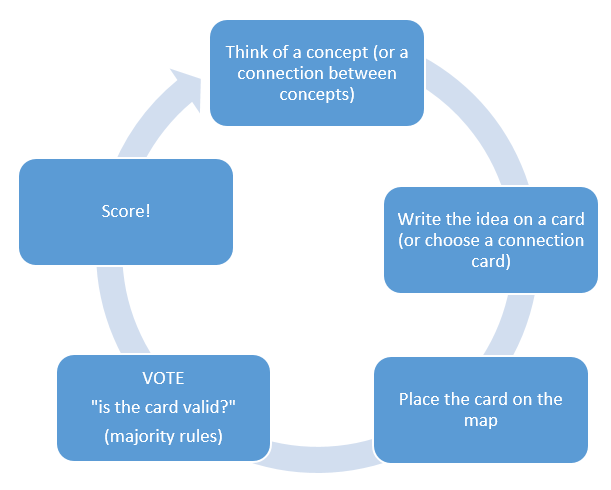
Exhibit 1 General Overview of the Basic Game
Before the start of the game, the group decides on the focus of the Game based on the topic that the Group wishes to explore. That focus is written as the title for the MAP. For example, “XYZ Company’s Map for Marketing,” “Game Theory,” or “Relationships in the Health Care Coalition of ABC County.” Players’ names are written on the score sheet and players are given a stack of pieces.
- One person is selected to be the Scorekeeper—he or she should have a calculator.
- A non-player may be chosen as a facilitator (to help conversations move forward smoothly).
The Strategic Knowledge Map (MAP) is created as players take turns adding pieces to the game’s play surface. Each player may place one piece per turn. Turns are taken starting with the Scorekeeper and proceeding around the table in a clockwise direction. When a piece is played, the other players immediately vote to determine if the piece is to stay on the map—and how many points the player should receive.
There are two basic kinds of pieces that may be played (see Appendix A). The first piece is a “Point of interest” (POI)—these are the concepts that players think of and place on the map: the places on the map. Players take turns choosing and creating each Point of Interest and naming it by writing a title on the POI playing piece.
- One point is awarded for each POI that the player places on the map.
- One bonus point is awarded if the POI is measurable (determined by popular vote of the players).
Instead of POIs being “national parks,” here, they can be anything that the player feels is important or interesting for the organization (within the focus of the game)—from “pencils in the stockroom,” to “employee motivation,” and even “interest rate.” These might also be understood as “destinations” or “endpoints.” However, it is important that each is more of a category than a specific number. For example, a POI should be titled “annual income” instead of “$5 million per year.” Under the POI title, the player writes how the POI will be measured. For example, “income” might be measured in “dollars per month” and “customer satisfaction” might be measured by “phone survey.”
There may be some argument as to whether a POI is “real” or otherwise acceptable. Here is a little bit of clarification. If a player places a POI, one point is automatically awarded—even if others think the POI is not real or important. For example, “invisible fairies” is a valid POI. When voting, the group decides if the POI is measurable. So, unless the player happens to have a way to identify the number of invisible fairies, the group will probably not vote to award the bonus point!
“Causeways” are like roads on a map (see Appendix A). During his or her turn, each player may choose to place a Causeway on the MAP to show the direction of cause-and-effect.
For example, one POI might say, (“Training”) with a Causeway played to link the POI for “Training” with another POI “Customer Satisfaction.” Essentially, the causeway tells how changes in on POI results in changes in another POI. Here, wild ideas should be avoided. For example, Players should avoid thinking “I saw a show about how dogs can be taught how to drive, therefore, it is OK to say that we can use dogs to drive our delivery trucks.” A good way to evaluate a Causeway is to state the relationship in a sentence. For example, “More of this POI will cause more of that POI.”
When a Causeway is placed, the other players vote, to decide if it is a valid/reasonable play. For example, a Causeway showing POI (more dollars spent on advertising) will lead to (cause) POI (more sales) might be voted as valid. In contrast, a Causeway showing that POI (more dollars spent on advertising) will lead to POI (faster production speeds) might not be considered valid.
In addition to the two basic pieces (POI and Causeway) that are played during individual turns, there are three other pieces that may find their way onto the MAP.
“Fog” (see Appendix A) is a marker placed on Causeways when the group cannot come to a fast voting decision about whether the Causeway is valid. Fog indicates the need for additional research.
If there is no majority for a vote on the measurability of a POI or the validity of a Causeway, or if the argument gets too heated (we’ve all been on road trips like that) any player may suggest that a FOG piece be placed. Fog is placed by general consensus (or a majority vote). Discussion on the piece is halted for the time and play continues to the next person.
- A Causeway that is under FOG may remain on the map but does not count toward any player’s point total.
- A POI under FOG may remain on the table but the player does not receive a bonus point for measurability.
The two final pieces are placed to help keep track of bonus points for key developments of the map (see Appendix A). A “Gold Star” is placed on a POI the first time that a second Causeway is placed pointing towards the POI. The player who places that Causeway is awarded two bonus points. This may be understood as “Merging.”
With a real map, multiple roads provide players with multiple options for reaching their destinations by Merging onto and off of various routes. The Gold Star shows the importance of having multiple roads to reach POIs.
A “Blue Ribbon” (see Appendix A) is placed at the center of a loop when a player places a Causeway that completes a beltway (circle of Causeways). The player is awarded five points.
A beltway is a loop which includes four or more POIs, with all the Causeways between the POIs pointing in the “same” direction (so a vehicle could travel in a loop back to its starting point without violating any traffic laws). The Blue Ribbon shows the importance of recognizing positive and negative reinforcing loops (also called virtuous cycles and vicious cycles).
Simple Strategies
To gain a higher score, be sure that the POIs played are measurable. Some vaguely stated concepts (“morale”, for example) are important, but not easily measurable, whereas “increased employee satisfaction” is easier to measure. Those may lead to arguments, delays, and loss of potential points. Players should strive for Gold Stars by identifying valid Causeways between multiple POIs. Similarly, strive to play Causeways that are reasonable, so, again, the group may easily award points. Finally, a Blue Ribbon provides the greatest opportunity to gain points. However, it must be built carefully from good POIs and Causeways (or else your Beltway may collapse). Remember, a Beltway can be very large, so you may be able to create loops by identifying connections between POIs at opposite ends of the map.
Basic Game Mechanics
The scorekeeper goes first; play follows around the table clockwise. When each player has taken a turn and placed a piece, it is the end of the round. The Group score is calculated at the end of the round.
Players take turns placing one game piece per player per round (Causeway or Point of Interest (POI)) on the MAP.
If the played piece is a POI, the player must write what the POI represents (e.g., income or creativity) and how it might be measured (e.g., dollars).
The player receives one point for any POI played.
The group votes if the POI is measurable. If the group agrees it is, the player is awarded a second point.
If the played piece is a Causeway, it must be placed to indicate a link between two POIs and the player must mark the appropriate word on the Causeway to show one POI causes "more” or "less” of the other POI.
The group votes if the Causeway indicates a reasonable or sensible connection. If a majority of players votes that it does, the player receives one point. If not, the Causeway is removed from the map.
f the vote is tied, a FOG piece is placed on the Causeway and no points are awarded.
If the Causeway is the second Causeway pointing to a POI, a Gold Star is placed on the POI and the player is awarded two bonus points.
If the Causeway completes a beltway (four or more Causeways in a loop) a Blue Ribbon is placed in the center and the person who played the last Causeway is awarded five bonus points.
Points are recorded on the Scorecard by the Scorekeeper immediately after voting occurs.
There are some additional rules to facilitate understanding and play.
- Scoring of the game may be “individual score,” “group score,” or both. The decision rests with the team and the culture of the organization.
- Pieces may be rearranged by group consensus—especially to make the map more readable and/or to make room for more pieces.
- Additional POIs and Causeways may be inserted by group consensus. For example, if POI “A” leads to POI “C,” the group may want to insert POI “B” (and another causeway) between the two.
- Rules may be changed with the consensus of all players (and the consent of the facilitator if one is used). All changes to the rules should be reviewed monthly to see if they are helping or hindering improvement of the MAP and the navigation of the organization.
During play, it is useful for players to ask themselves (or, for the facilitator to ask the players to consider) such questions as:
- What concepts are important to me in this situation?
- What concepts might be added as POIs?
- What “blind spot” (“white space” or unexplored territory) exists on the map because a POI does not have a Gold Star?
- What new insights might be emerging that suggest new actions or changes in course?
When a FOG piece is placed on a piece to indicate where additional work is needed “outside the room”—this may indicate the need for additional research which is then brought back to the table at a later date. Then, FOG pieces may be removed if voted off the map by a majority of the group.
Post Game
It is certainly possible to put the game on “pause” and resume playing another day. It is also very useful to schedule some time at the end of the game (at least 30 minutes) to have a general conversation about the Game. Players might discuss:
- What did you learn from the Game?
- What are the implications in the organization for work-flow, communication, tracking, and feedback?
- What might each player change in her or his part of the organization?
- What “leverage points” might exist for change—where one improvement will cascade into many (here, look especially at the loops)?
- Is the Mapicity (Systemicity) score greater than 0.50? If not, you should probably keep playing until it is.
- What concepts and connections might be missing from the MAP that might be considered for a future game?
- If you have a question about any facet of the organization—any operation, workflow, direction, or strategic challenge—now is the time to ASK MATT. If the group, guided by the map, cannot answer, it is time to schedule another game.
Road Trip Rules
The “Road Trip” begins with having a complete map from the basic game. Essentially, the Road Trip is about using the game map for navigating an organization through the real world. Before starting the Road Trip, we recommend having Gold Stars on more than half the POIs. The Road Trip focuses on tracking the progress of the organization by tracking the changes in each POI on a monthly basis.
For the Road Trip:
- A “Travelogue” piece (See APPENDIX A) should be placed on each POI A Travelogue is simply a 4X6 piece that lists each month, and has space for each month’s data (for example, hours worked, or $ in bank).
- Each player volunteers to gather data for the Travelogue (or is assigned based on their roles within the organization).
- If this is to be part of a strategic plan, write the goals for each POI on the Travelogue.
- The whole group meets on a monthly basis. Each person brings their data.
- Between meetings, each player records their key decisions/actions on their personal “Turning Points” sheet. This is a sort of diary that is related back to the MAP. For example, see Appendix D.
- Each monthly meeting:
- Record the data on the Travelogues (one point awarded when a data point is added).
- Players take turns sharing their “Turning Points” (major decisions). The group votes as to whether an action counts as a major decision (one point awarded for each).
- Discuss results of actions and potential results of differing actions using the map as a guide. Discuss what additional research might make a better map.
- Repeat each month.
- At the end of twelve months…
- Crunch the numbers—do they add up? That is, did the predicted changes in POIs lead to the predicted changes in other POIs? Was the map followed as planned? Why, why not?
- Replay the game—add additional POIs and Causeways to reflect the new knowledge.
During the Long Game, players have the opportunity to gain extra points with meta-level actions including:
- Look at a complex POI and play a New Game to understand it (the title of the original POI becomes the title of the new game) (five points for each player of the new game). In other words, create a detail map for an area within the original map.
- Play the Game with other departments, organizations, and coalitions (ten points for each person to convene a new game).
- Integrate multiple Games. Starting with two or more MAPs, look to see if there are any POIs that are the same for both MAPs. If there are, the two maps may be linked by their POIs. Or, if there are no overlaps between the MAPs, strive to identify new Causeways between POIs of differing MAPs. This will lead to greater understanding (twenty bonus points for the player or players who convene the integration effort and five bonus points for each participant).
Players
The game may be played with one person or more. For convenience, it may best be played with four to eight people. If players are not familiar with the game, or if there are many people playing, it is recommended that the organization should recruit a game coach or facilitator—someone who is not playing the game, but is familiar with the game process and responsible for making sure the game runs smoothly. If many players are involved, it may also be useful to play the game with multiple smaller groups—and then integrate the maps later on.
Equipment
This game includes five pieces (POIs, Causeways, FOG, Gold Stars, and Blue Ribbons). There are also score sheets (for tracking progress), marker pens (for writing information on pieces). If deemed necessary, a timer may be used for moderating conversations. The playing surface provides a place to place the pieces. The Game may also be played on a table-top or any other surface where the pieces may be set. Because players may want to save and/or move the MAP, it is often useful to play on some large sheets of chart-paper or butcher-paper. That way, the map may be rolled up your map and carried to meetings (the MAP may also be moved and connected with other MAPs). Finally, the Game includes a set of facilitator suggestions for stimulating conversation, improving the flow of the Game, and improving the end result as well as additional rules for the Advanced Game.
Scoring (Overview)
Individuals gain higher scores by placing Causeways and POIs. One point is awarded for each POI that is played. One bonus point is awarded if the POI is considered measurable by a vote of the group. One point is awarded and for each Causeway that is considered reasonable by a vote of the group (often, this should mean that they are supported by research). One Gold Star is placed on a POI the first time that a second Causeway is pointing towards it. The player who places the second Causeway is awarded two bonus points automatically if the group votes to keep the piece on the map. When a player places a Causeway that creates a loop (including four or more POIs with all Causeways pointing in the same direction) a Blue Ribbon is placed at the center of the loop and the player is immediately awarded five bonus points if the group votes to keep the Causeway as part of the map.
The Group gains higher scores by having a MAP that is more complex and more interconnected (which, for a map, makes it more practical and useful for navigation).
In this game, in a sense, each player is competing with other players to gain a higher score. That scoring sets a tone of friendly competition where each individual is striving to bring out the best knowledge in themselves and each other. The idea is not to reduce the score of others. Because, at the same time, all players are working together to gain a higher Group score—more like a running race, than a football game. That scoring reflects a quest for greater shared understanding of the world.
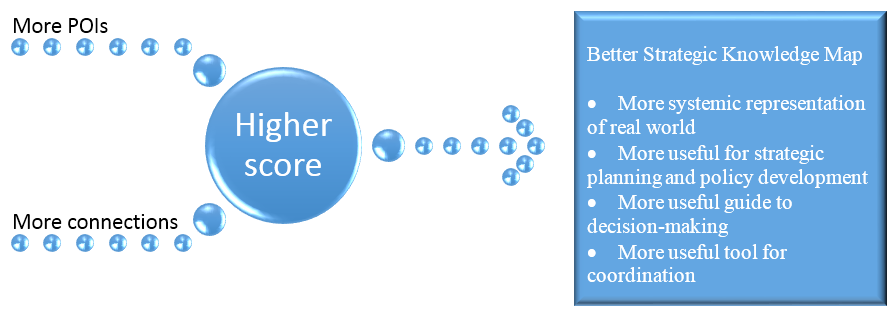
Exhibit 2 General overview of scoring and usefulness
To conclude this section, it is important that players engage the game, and one another, with a sense of respect, open inquiry, and playfulness.
Results of Alpha Playtesting
At the time of this writing, we’ve conducted six “alpha” tests of the game. These have been small-scale, often with people we know (or among the game developers, ourselves). In this section, we will report on some key themes that emerged. We have made changes to the game and developed beta testing plans based on ideas and comments that emerged in alpha testing.
Playtest groups ranged in size from one to five. Topics included marketing, business startup, operations, and politics in the Middle East. Game developers were always in attendance and provided the playtesters with a set of rules, pieces, and a brief overview of the game. Developers were also on hand to answer any questions as they arose.
As players read the rules and discussed the possibilities of play, they generally liked the cover on the box. Many found the rules confusing. Additionally, there was some confusion over terminology (because examples in the game were written for business players… but some players were interested in playing the game for other purposes, such as a research project or to solve a personal problem).
Many players liked the opportunity for team-scoring, recognizing that the group will always “win” whatever the individual scores may be. They also recognize that this is not an “ordinary” game because there were no set pieces or “right answers” of specific goals to reach. Indeed, that lack of clear or traditional objective was sometimes confusing.
Many testers gave great thought to the process of play; and, even before play began, were attempting to “strategize” their play to gain higher points. This led to additional “what if questions” and conversations.
Once play began, some confusion continued around the rules, actions to be taken during play, point allocation, and the objectives of the game.
Some recognized quickly that much confusion could be alleviated by having a facilitator or experienced player who could manage the flow of the game so that the players could concentrate on playing.
For some, there was the recognition that this game was something similar to their previous experience with flow-charting; others experienced confusion about the process and purpose of play.
It was found that there is often the need to be able to rearrange pieces.
One purpose of the game is to develop new insights around how people understand their organization and its environment. As play progresses, new insights and understandings emerge. Thus, it became a challenge for some people to move back and forth between “playing” the game and reflecting on the insights that were rapidly emerging from the map created during play.
The game is designed to develop a map. A higher score is achieved by creating a map with more Complexity (more POIs) and more Mapicity (more Causeway connections between POIs). From playtesting, the maps ranged in Complexity from 3-29. They ranged in Mapicity from 0 to 0.5.
Most players expressed interest in the game. Common comments included: “It was fun,” “more fun than expected,” and “intellectually stimulating.” Even in those tests where players were not highly enthusiastic, they were clearly very engaged in the game.
Game play (and after play) included many good discussions, questions, and answers about the understandings being generated. Some discussions included using the map as a guide for organizational understanding and action.
There were many suggestions about how the game might be improved, simplified, marketed, and developed in new ways. For example, the game could be played by individuals or small groups who would each develop a small map; then, those maps could be connected to create a larger, more intricate map to gain still greater insights. Another important suggestion was that the game could be moved to an online environment. This could a much more positive user experience (Deterding, Sicart, Nacke, O'Hara, & Dixon, 2011).
Other suggestions include the idea that we might provide online instructions and videos as well as sample maps or samples of play. These would be very useful to help new players to see how the game should be played.
To summarize this section, the alpha testers provided an excellent range of suggestions—many of which have been incorporated into the revised rules. It is interesting to note that sometimes this interfered with the play of the game—as some testers were “redesigning” the game while others were busy playing it.
The underlying process and function of the game is generally considered to be successful because it stimulates a great deal of conversation between the players and insights by individuals. Game play supports the creative generation of new ideas and new ways to evaluate old ideas. Where one player might have thought some business practices were clear and simple, another might disagree. The game provides a forum for working out those differences. Importantly, the structure of the game allows and encourages participants to develop a shared understanding that is more complex and more complete than any of the individual understandings.
Generally, players were interested in playing the game again (which we took as a good sign). We are greatly in their debt for the wide range of suggestions and conversations which clarified many issues around play.
Competencies, Teaching, and Learning
As discussed, the focus of this game is on surfacing, crystalizing, and evaluating knowledge as formalized in a Strategic Knowledge Map (SKM). Thus, we expect that managers and other leaders who follow the process and scoring of the game will become more proficient in creating and evaluating SKMs.
Because the game involves surfacing real-world knowledge about existing business situations, the players may expect to gain a great deal of knowledge related to their specific situation.
Because the play requires a great deal of communication and collaboration within the process of play, we expect that the game will tacitly build competency in:
- Communication;
- Collaboration;
- Decision making;
- Systems thinking;
- Meta analysis;
- Finding unique insights that may be used to achieve goals more quickly, and;
- Coordination.
In some sense, the game creates a model—including visual representation, reduction, and a pragmatic feature (Karl, 2014). However, those design elements are chosen by the players rather than the designers. The game creates a model similar to a work-flow map. Therefore, the players may expect to gain knowledge around how work actually flows within their organization. This, in turn, may suggest insights for improving workflow and communication flow within the organization.
When the game is played by members of a community coalition, participants will also gain knowledge of related organizations, their effects on the community, and opportunities for increased collaboration.
It is interesting to note that the knowledge gained through play is “real world” rather than “hypothetical” or “business school” knowledge. Thus, the knowledge gained can be expected to be more useful in immediate situations and less transferable to alternative situations.
Insights Into the Future
Using the insights form alpha testing, we have made numerous changes to improve the clarity and playability of the game. These changes should be sufficient to create a more playable “beta” test version. Particularly if play is facilitated by an experienced individual or “mapping coach” (perhaps “cartography coach”?).
Further development in additional directions is being considered, including:
- For adventurous and creative groups, working with the group to decide their own "rules of the game" before the start of play.
- For those who want a pre-written set of POI, researching the related literature to find some concepts and relationships that might apply to their situation.
- Adding new and more complex elements to game play as players develop more skills.
- Developing a more effective explanation for play. The game itself is not terribly difficult. The underlying concept, however, is rather unusual and sometimes difficult to grasp.
- Testing and further developing a “long game” where the game is revisited on a monthly basis to bring in new data—and played out again in full on an annual basis. This would help participants to continually improve their understanding.
- Developing an online and/or APP version of game.
- Developing an easier game with POIs that are pre-made. That is, common business concepts are already written on them.
The game is based on notions of causality, measurability, complexity, and systems thinking. While our goal has been to simplify the process of understanding complexity, it is worth mentioning that there are also opportunities for creating an advanced game that will require a higher degree of experience and skill to play. Explorations in the literature suggest that more nuanced understandings await. These include abstraction (Wallis, 2014a), core/belt (Wallis, 2014c), orthogonal understandings of taxonomy, and others that await discovery on this new road to making better maps.
Conclusion
In this paper, we have presented and discussed a new game, ASK MATT. This game provides a novel approach to developing innovative understandings of organizational activities and environments. In this paper, we have presented the rules, process of play, and the results of our alpha testing.
As we have played the basic game with our alpha testers, most have exhibited a high degree of interest, engagement, and enthusiasm. Additionally, consultants we have spoken to also tend to show a high level of interest in the game. In part, we believe, because they recognize that gamification has a great future in the business world.
A high scoring game is expected to be highly effective for supporting Strategic Knowledge Mapping, strategic planning, policy development and analysis, and more. This game also offers significant potential benefits to individuals and organizations seeking to improve communication, collaboration, and their shared understanding of the complex world in which we work. Indeed, the online version of the game may well generate massive insights on organizational level. Consider, for example, what happens when individuals, teams, and experts are all placing their interconnected understandings into a large virtual-space version of the game. The resulting map will be far beyond the comprehension of any individual. Yet, having this map to serve as a guide, an individual may leverage his or her ability to make positive change.
Importantly, this game is different from existing practices for strategic planning (which, sadly, have rarely proved effective). Where typical strategic plans are often based on a single shared goal to be reached by a single path, the map developed in the ASK MATT game allows each player to have a different preferred destination or goal. Yet, the many goals are interwoven so that individual success is linked to shared success.
We look forward to developing this game in its table-top and online forms. And, importantly, we look forward to hearing your comments, suggestions, and opportunities for collaboration.
References
Alvarez, S. A., & Busenitz, L. W. (2001). The entrepreneurship of resource-based theory. Journal of Management, 27(6), 755-775.
Bidgelow, J. D. (2004). An online situation for problem-based learning in a junior-level management course. Developments in Business Simulation and Experiential Learning, 31, 120-124.
Brown, S. L., & Eisenhardt, K. M. (1998). Competing on the Edge: Strategy as Structured Chaos. Boston: Harvard Business School Press.
Bryson, J. M. (2011). Strategic planning for public and nonprofit organizations: A guide to strengthening and sustaining organizational achievement (4 ed.). San Francisco: Jossey-Bass.
Burch, G. F., Batchelor, J. H., Heller, N. A., Shaw, J., Kendall, W., & Turner, B. (2014). Experiential learning—What do we know?: A meta-analysis of 40 years of research. Developments in Business Simulation and Experiential Learning,, 41, 279-283.
Butler, R. J., Markulis, P. M., & Strang, D. R. (1985). Learning theory and research design: How has ABSEL fared? Developments in Business Simulation and Experiential Learning, 12, 86-90.
Casson, M. (2005). Entrepreneurship and the theory of the firm. Journal of Economic Behavior & Organization, 58(2), 327-348.
Curseu, P., Schalk, R., & Schruijer, S. (2010). The use of cognitive mapping in eliciting and evaluating group cognitions. Journal of Applied Social Psychology, 40(5), 1258-1291.
Czarniawska, B. (2001). Is it possible to be a constructionist consultant? Management Learning, 32(2), 353-266.
Morçöl G. (eds.) (2008). Complexity and policy analysis: Tools and concepts for designing robust policies in a complex world. Goodyear, Arizona: ISCE Publishing.
Deterding, S., Dixon, D., Khaled, R., & Nacke, L. (2011). From game design elements to gamefulness: Defining “gamification”. Paper presented at the MindTrek'11, Tampere, Finland. http://85.214.46.140/niklas/bach/MindTrek_Gamification_PrinterReady_110806_SDE_accepted_LEN_changes_1.pdf
Deterding, S., Sicart, M., Nacke, L., O'Hara, K., & Dixon, d. (2011). Gamification: Using game design elements in non-gaming contexts. Paper presented at the CHI 2011, Vancouver, BC, Canada. http://gamification-research.org/wp-content/uploads/2011/04/01-Deterding-Sicart-Nacke-OHara-Dixon.pdf
Faria, A. J. (2000). The changing nature of simulation research: A brief ABSEL history. Developments in Business Simulation and Experiential Learning, 27, 84-90.
Gold, S., Markulis, P., & Strang, D. (2014). ABSEL research: A perspective on the quality of the research presented in the proceedings. Developments in Business Simulation and Experiential Learning, 41, 15-29.
Hill, T., & Westbrook, R. (1997). SWOT analysis: It's time for a product recall. Long Range Planning, 30(1), 46-52.
Jakubowski, M. (2014). Gamification in business and education: Project of gamified course for university students. Developments in Business Simulation and Experiential Learning, 41, 339-342.
Karl, C. K. (2014). Solving the simulation paradox: How educational games can support research efforts. Developments in Business Simulation and Experiential Learning,, 41, 132-139.
Kelly, G. A. (1955). The psychology of personal constructs. New York: Norton.
Lorange, P. (1978). Corporate planning: An executive viewpoint. from http://dspace.mit.edu/bitstream/handle/1721.1/47152/corporateplannin00lora.pdf?sequence=1
Martin, R. L. (2014). The Big Lie of Strategic Planning. Harvard Business Review, January/February.
Miller, C. C., & Cardinal, L. B. (1994). Strategic planning and firm performance: A synthesis of more than two decades of research. Academy of Management Journal, 37(6), 1649-1685.
Morçöl, G. (2010). Issues in reconceptualizing public policy from the perspective of complexity theory. E:CO, 12(1), 52-60.
Nguyen, N. C., Graham, D., Ross, H., Maani, K., & Bosch, O. (2012). Educating systems thinking for sustainability: Experience with a developing country. Systems Research and Behavioral Science, 29(1), 14-29.
Raphael, T. D. (1982). Integrative complexity theory and forecasting international crises: Berlin 1946-1962. The Journal of Conflict Resolution, 26(3).
Senge, P. (1990). The Fifth Discipline: The Art and Practice of The Learning Organization. New York: Currency Doubleday.
Senge, P., Kleiner, K., Roberts, S., Ross, R. B., & Smith, B. J. (1994). The Fifth Discipline Fieldbook: Strategies and Tools for Building a Learning Organization. New York: Currency Doubleday.
Suedfeld, P., Tetlock, P. E., & Streufert, S. (1992). Conceptual/integrative complexity. In C. P. Smith (Ed.), Handbook of Thematic Content Analysis (pp. 393-400). New York: Cambridge University Press.
Tait, A., & Richardson, K. A. (2011). Guest editorial: From theory to practice. E:CO, 13(1-2), v-vi.
Wallis, S. E. (2009a). Seeking the robust core of organizational learning theory. International Journal of Collaborative Enterprise, 1(2), 180-193.
Wallis, S. E. (2009b). Seeking the robust core of social entrepreneurship theory. In J. A. Goldstein, J. K. Hazy, & J. Silberstang (Eds.), Social Entrepreneurship & Complexity. Litchfield Park, AZ: ISCE Publishing.
Wallis, S. E. (2010a). The structure of theory and the structure of scientific revolutions: What constitutes an advance in theory? In S. E. Wallis (Ed.), Cybernetics and systems theory in management: Views, tools, and advancements (pp. 151-174). Hershey, PA: IGI Global.
Wallis, S. E. (2010b). Towards developing effective ethics for effective behavior. Social Responsibility Journal, 6(4), 536-550.
Wallis, S. E. (2010c). Towards the development of more robust policy models. Integral Review, 6(1), 153-160.
Wallis, S. E. (2011a). Avoiding policy failure: A workable approach. Litchfield Park, AZ: Emergent Publications.
Wallis, S. E. (2011b). The complexity of complexity theory: An innovative analysis. In P. M. Allen, K. A. Richardson, & J. A. Goldstein (eds.), Emergence, Complexity and Organization: E:CO Annual (Vol. 11, pp. 179-200). Litchfield Park, AZ: Emergent Publications.
Wallis, S. E. (2012, July 22-27, 2012). Theories of psychology: Evolving towards greater effectiveness or wandering, lost in the jungle, without a guide? Paper presented at the 30th International Congress of Psychology: Psychology Serving Humanity, Cape Town, South Africa.
Wallis, S. E. (2013). How to choose between policy proposals: A simple tool based on systems thinking and complexity theory. Emergence: Complexity & Organization, 15(3), 94-120.
Wallis, S. E. (2014a). Abstraction and insight: Building better conceptual systems to support more effective social change. Foundations of Science, 19(4), 353-362. doi: 10.1007/s10699-014-9359-x
Wallis, S. E. (2014b). Structures of logic in policy and theory: Identifying sub-systemic bricks for investigating, building, and understanding conceptual systems. Foundations of Science, in press.
Wallis, S. E. (2014c). A systems approach to understanding theory: Finding the core, identifying opportunities for improvement, and integrating fragmented fields. Systems Research and Behavioral Science, 31(1), 23-31.
Weick, K. (2003). Commentary on Czarniawska. Management Learning, 34(3), 379-382.
Wexler, M. N. (2001). The who, what and why of knowledge mapping. Journal of Knowledge Management, 5(3), 249.
Wheatley, M. J. (1992). Leadership and the New Science. San Francisco: Barrett-Koehler.
Wong, E. M., Ormiston, M. E., & Tetlock, P. E. (2011). The Effects of Top Management Team Integrative Complexity and Decentralized Decision Making on Corporate Social Performance. Academy of Management Journal, 54(6), 1207-1228.
Wright, B., & Wallis, S. E. (Under submission). A revolutionary method to advance entrepreneurship theories.
Zack, M. H. (2000). Competing on Knowledge. Handbook of Business Strategy, 1(1), 81-88.
APPENDIX A
Playing pieces

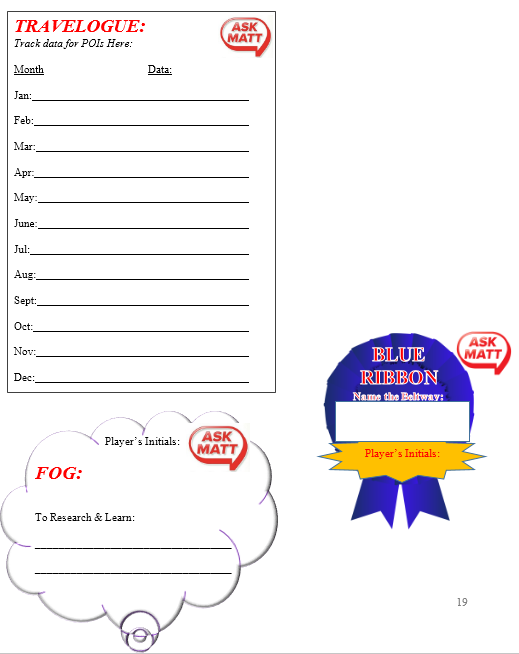
APPENDIX B
Score Sheet
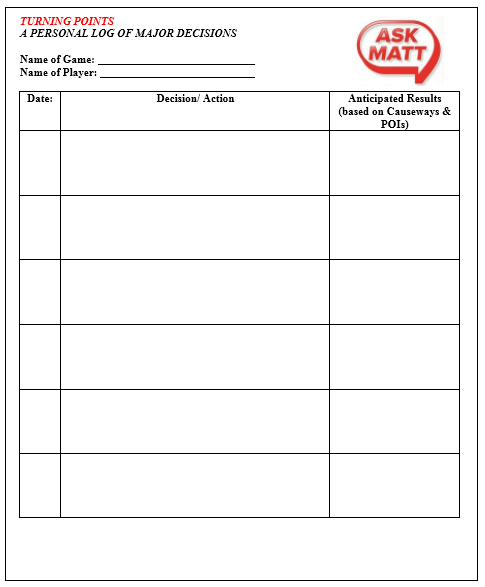
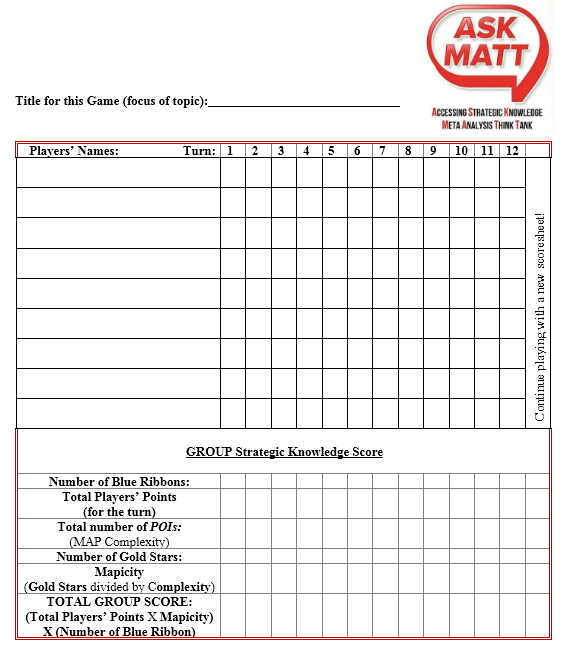
APPENDIX C
Sample Map

APPENDIX D
Sample entry on a “Turning Points” Tracking Sheet
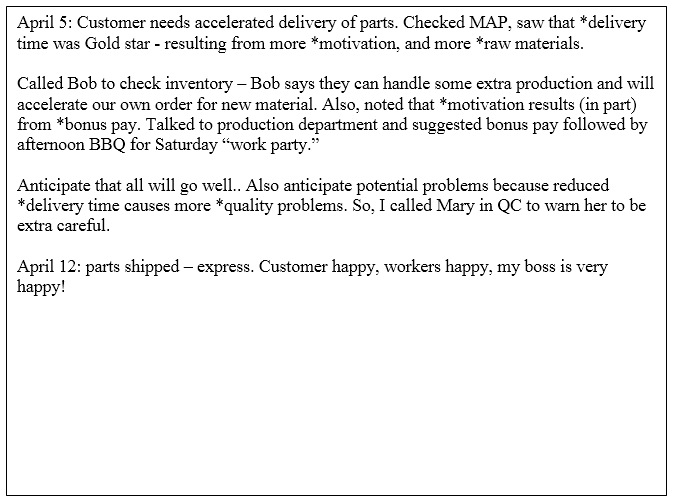
APPENDIX E
Example of Map Evolution Through the First Four Turns
